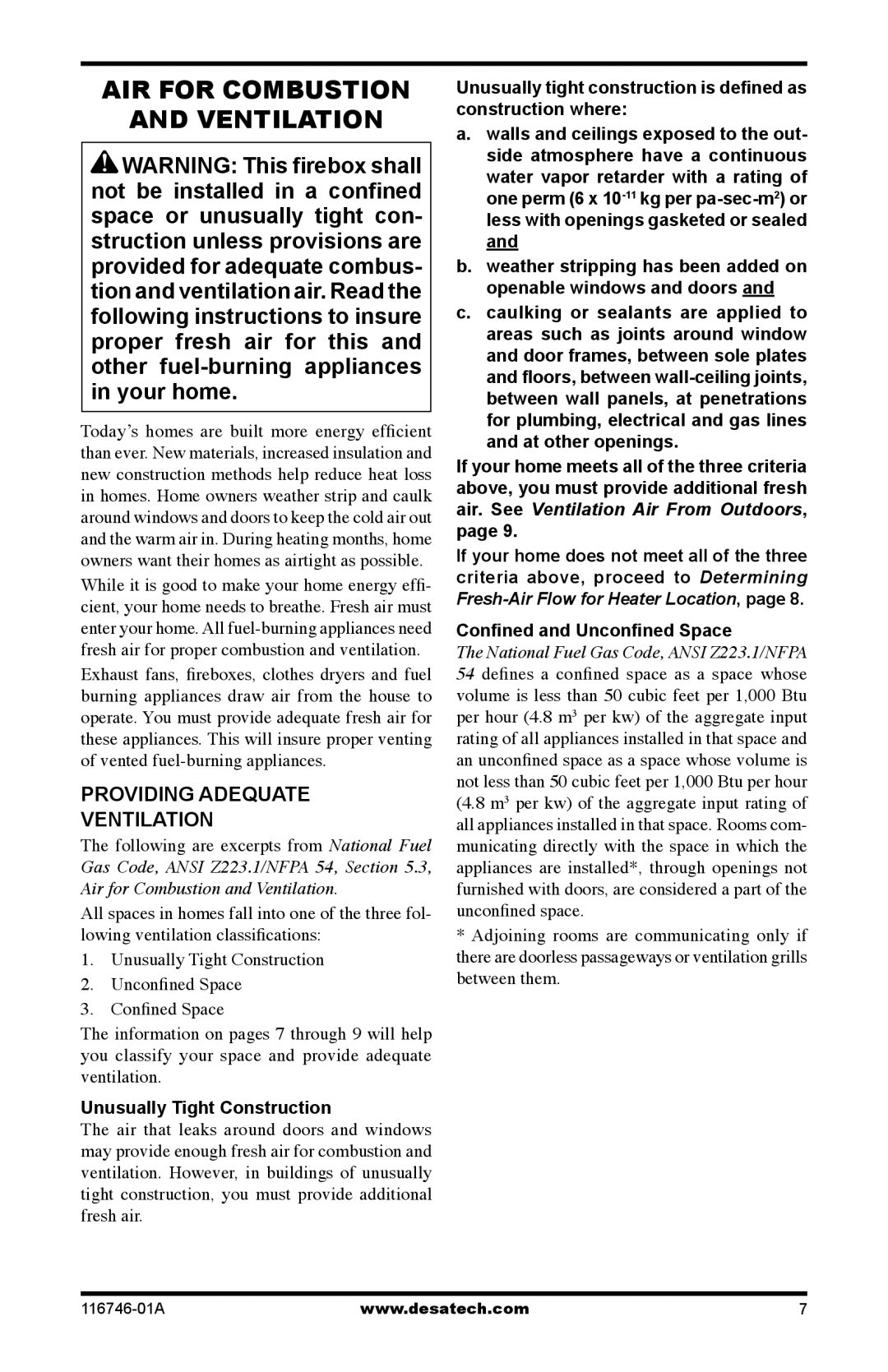VSGF36NRA, VSGF36NTA, VSGF36PTA, VSGF36PRA specifications
Desa VSGF36PRA, VSGF36PTA, VSGF36NTA, and VSGF36NRA are various models from a contemporary line of gas fireplaces that combine aesthetics, functionality, and advanced technology to enhance residential spaces. Each model offers unique features and characteristics designed to meet different consumer needs and preferences.The VSGF36PRA model stands out with its radiant heat and realistic flame display, effectively mimicking the experience of a traditional wood-burning fireplace. Its easy installation process makes it a viable choice for both new constructions and retrofitting existing spaces. The model utilizes high-efficiency gas burning technology, ensuring a warm and cozy environment while maintaining energy savings. Furthermore, it boasts a stylish design that can seamlessly integrate into any living room setting.
The VSGF36PTA is another dynamic addition to the lineup, featuring a traditional appearance with modern advancements. This model is known for its programmable thermostat that allows homeowners to control the temperature more precisely. The patented burner system creates a beautiful and lifelike flame, adding to the ambiance of any room. Additionally, the VSGF36PTA is equipped with a safety shut-off feature, ensuring peace of mind for users.
In contrast, the VSGF36NTA model targets those who appreciate a contemporary design. With its sleek lines and minimalistic facade, it offers an elegant touch to modern homes. This model incorporates advanced electronic ignition and a remote control for effortless operation, allowing users to enjoy their fireplace with convenience. The high-efficiency venting system also ensures optimal performance with lower emissions, making it environmentally friendly.
Lastly, the VSGF36NRA model combines both performance and versatility. This unit is designed for flexible installation options, allowing it to fit into various spaces. The customizable flame height and adjustable fan speed are key features that enhance the user experience. In terms of heating capabilities, the VSGF36NRA is engineered to provide reliable warmth during colder months while ensuring high efficiency.
Overall, the Desa VSGF36 series offers a diverse range of options suitable for various aesthetic preferences and functional needs. Each model features cutting-edge technology, ensuring that homeowners can enjoy the beauty and warmth of a fireplace while benefiting from enhanced efficiency and safety features.

